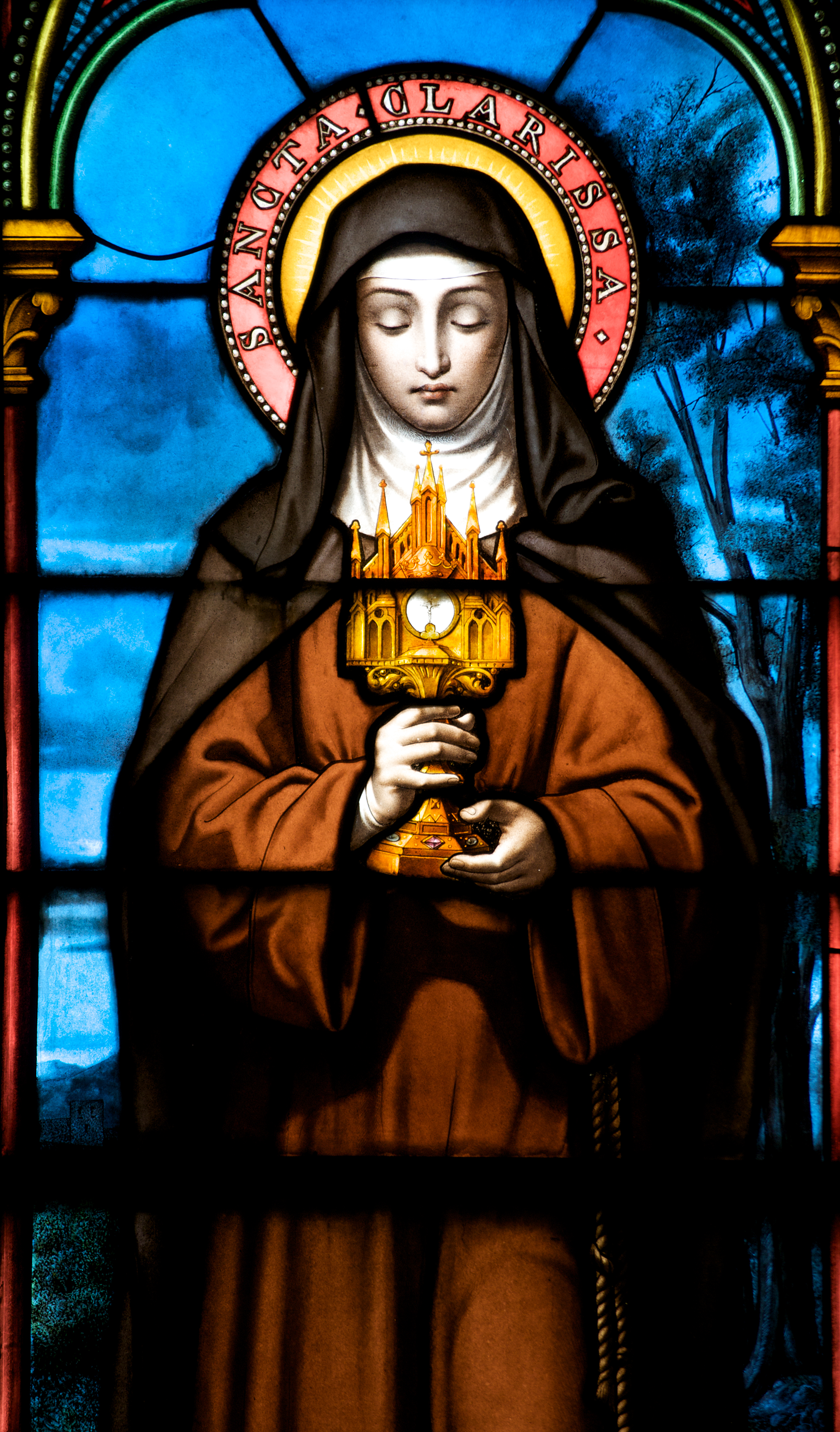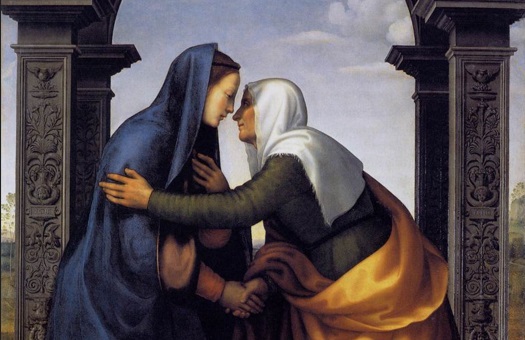
ST. CLARE OF ASSISI
In his book, St. Clare of Assisi: Light from the Cloister, Bret Thoman, OFS describes how St. Clare (1193-1253) referred to herself as the “Little plant of St. Francis.” When she was 18 years old, she heard a sermon by St. Francis of Assisi (1182-1226) and was moved to a vocational calling of her own. The root of the name Clara means “light.” St. Clare was, indeed, a light to the world beyond her cloistered life.
The story of St. Clare is very often linked with St. Francis who was her mentor and spiritual guide. However, St. Clare was unique in her own dedication to her mission and an order born out of her devotion is proof of this. It is also important to note that St. Francis took her unique vocation seriously, supporting her in her radical commitment to austerity and prayer.
Clare was born Chiara Offeduccio. Her father and mother were from wealthy Roman families. After hearing St. Francis speak, Clare went to meet with him. She soon had her hair cut off and traded her rich gown for a plain robe. With the guidance of Francis, Clare joined the Benedictine nuns of San Paulo. Her father did not approve. Clare insisted that she would be the bride of Christ.
Seeking solitude, Clare went to another Benedictine monastery for nuns. Her sister, Catalina, who would choose the name Agnes, joined her there. Eventually, with a new dwelling, Clare would form an order known as the Poor Ladies of San Damiano. Clare became the abbess of this new monastery.
Clare often stood up to the pressure to follow Benedictine rule, rather than that of St. Francis. She remained devoted to the rule of Francis, adopting a radical commitment to living in poverty and prayer. This austere and secluded life also involved dedication to the Eucharist. St. Clare is often depicted with a monstrance. Her belief in God’s providence led her to face the assault of an army on Assisi. She approached the invaders while holding the Blessed Sacrament. They retreated in fear. Thus was the power of her faith.
In 1253, Pope Innocent IV declared that St. Clare’s Rule would become the governing rule of Clare’s order of Poor Ladies. St. Clare would die shortly after at the age of 59.
The influence of St. Clare of Assisi permeates our world today and demonstrates that the power of prayer has been an influence throughout history. The Poor Clare Sisters carry this devotion to prayer in monasteries in many nations. They are carrying out their mission in communities here in Canada.
In a world obsessed with technology and noise and timid to utter the name of God, a quiet community of sisters pray for humanity, for justice, for the well-being of individuals and in devotion and thanksgiving to Jesus. It is humbling and inspiring to look at their websites and read about their way of life. St. Clare began this unique vocation that still shines in the world today. We are so blessed that she did. May we all be inspired by the words of this great saint:
“Love Him totally who has given Himself totally for your love.”
Jan Bentham is a retired Religion Coordinator with the Ottawa Catholic School Board. She is a musician, serving in music ministry at St. Ignatius Parish in Ottawa. She currently works at St. Paul’s University with the Catholic Women’s Leadership Program.

